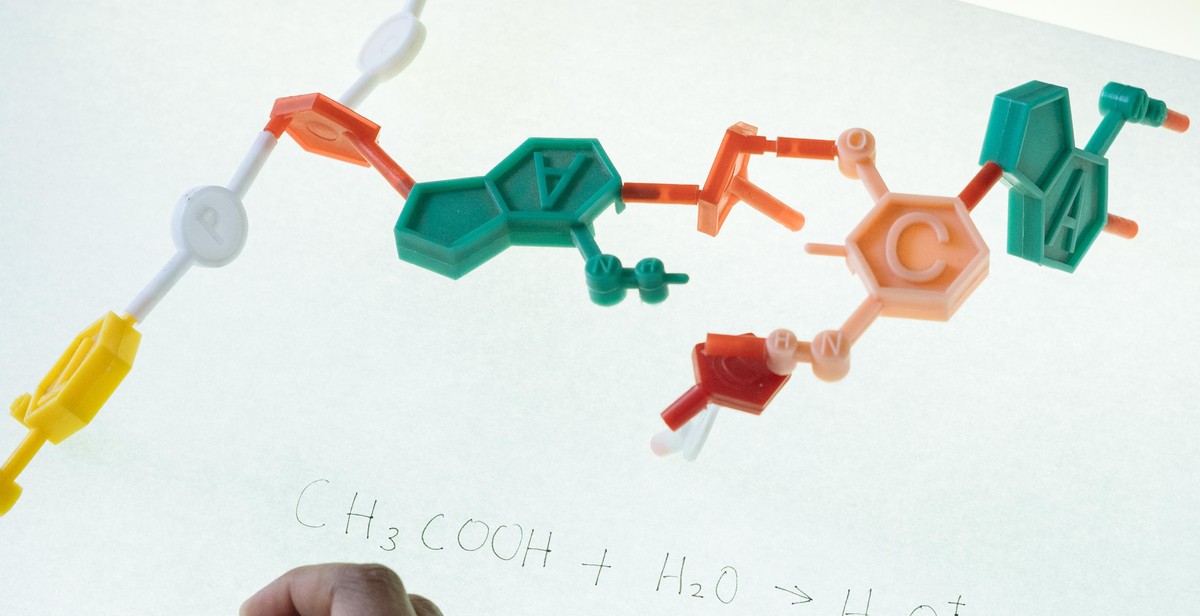Liquid Propane To Power Cars: Basic Information
As the world continues to seek alternative sources of energy, liquid propane is emerging as a viable option for powering cars. With its lower emissions and potential for cost savings, many individuals and businesses are turning to this clean and efficient fuel.
What is Liquid Propane?
Liquid propane, also known as liquefied petroleum gas (LPG), is a byproduct of natural gas processing and crude oil refining. It is a flammable hydrocarbon gas that is stored in a liquid state under pressure. Propane is commonly used for heating, cooking, and powering appliances, but its use as a fuel for vehicles is gaining popularity.
How Does Liquid Propane Power Cars?
When used as a fuel for vehicles, liquid propane is stored in a pressurized tank and then vaporized before being injected into the engine’s combustion chamber. The propane vapor mixes with air and is ignited by a spark plug, generating the necessary power to propel the vehicle forward. Propane-powered vehicles can either be dedicated vehicles that run solely on propane or bi-fuel vehicles that can switch between propane and gasoline.
Benefits of Using Liquid Propane as a Vehicle Fuel
There are several advantages to using liquid propane as a vehicle fuel:
- Lower Emissions: Propane produces fewer greenhouse gas emissions compared to gasoline or diesel. It has lower carbon content and burns cleaner, resulting in reduced air pollution.
- Cost Savings: Propane is typically cheaper than gasoline or diesel, offering potential cost savings for vehicle owners. Additionally, propane engines require less maintenance and have longer lifespans, leading to reduced operating costs.
- Domestic Energy Source: Propane is largely produced in the United States, reducing dependence on foreign oil imports. This can enhance energy security and promote domestic job growth.
- Infrastructure Availability: Propane refueling infrastructure is expanding, making it more accessible for vehicle owners. Propane can be refueled at dedicated propane stations or through portable cylinders.
Conclusion
In conclusion, liquid propane is a promising alternative fuel option for powering cars. With its lower emissions, cost savings, and domestic availability, it offers numerous benefits for vehicle owners and the environment. As the demand for clean and renewable energy continues to rise, liquid propane is likely to play a significant role in the future of transportation.

What is Liquid Propane?
Liquid propane, also known as propane or LPG (liquefied petroleum gas), is a versatile and efficient fuel that is commonly used to power vehicles. It is a byproduct of natural gas processing and petroleum refining. Propane is stored in a liquid state under pressure, making it easy to transport and store. It is colorless, odorless, and non-toxic, which makes it a safe and popular choice for various applications, including automotive use.
Properties of Liquid Propane
Liquid propane has several unique properties that make it suitable for automotive use:
- High Energy Density: Propane has a high energy content, which means it can provide more power per unit of volume compared to other fuels. This allows vehicles powered by propane to have a longer driving range.
- Low Emissions: Propane burns cleaner than gasoline or diesel, resulting in lower emissions of harmful pollutants such as carbon monoxide, nitrogen oxides, and particulate matter. This makes propane an environmentally-friendly alternative fuel.
- Easy Combustion: Propane has a low autoignition temperature and a narrow flammability range, making it easy to ignite and control the combustion process. This contributes to the efficient operation of propane-powered vehicles.
- Stable and Non-Toxic: Propane is non-toxic and does not contaminate soil or water. It is also non-corrosive, which means it does not damage fuel system components or storage tanks.
- Availability: Propane is widely available and can be easily refueled at various locations, including gas stations, fueling stations, and propane dealers.
Overall, liquid propane offers a clean, efficient, and readily available alternative to traditional fossil fuels for powering vehicles. Its properties make it an attractive choice for individuals and businesses looking to reduce their carbon footprint and contribute to a greener transportation sector.

Liquid Propane as a Fuel
Liquid propane, also known as propane or LPG (liquefied petroleum gas), is a popular alternative fuel for vehicles due to its numerous advantages. However, it also comes with a few disadvantages that need to be considered. In this section, we will explore the advantages and disadvantages of using liquid propane as a fuel for cars.
Advantages of Liquid Propane as a Fuel
1. Cost-Effective: One of the major advantages of using liquid propane as a fuel is its cost-effectiveness. Propane is generally cheaper than gasoline or diesel, making it an attractive option for budget-conscious drivers.
2. Reduced Emissions: Propane-powered vehicles produce significantly fewer emissions compared to gasoline or diesel vehicles. Propane combustion releases fewer greenhouse gases, carbon monoxide, and nitrogen oxide, making it a cleaner and more environmentally friendly fuel option.
3. Abundant Supply: Propane is readily available in many regions and has a well-established distribution network. This ensures a consistent and reliable supply of fuel, making it convenient for drivers.
4. Extended Engine Life: Propane is a cleaner-burning fuel that leaves fewer deposits on engine components. This can result in less engine wear and extended engine life, reducing maintenance costs in the long run.
5. Quieter Operation: Propane engines generally operate more quietly compared to their gasoline or diesel counterparts. This can lead to a more peaceful driving experience, especially in urban areas.
Disadvantages of Liquid Propane as a Fuel
1. Reduced Range: Liquid propane has a lower energy density compared to gasoline or diesel, which means that vehicles running on propane may have a shorter driving range. This can be a limitation for long-distance travelers.
2. Fueling Infrastructure: While propane is widely available, the number of propane refueling stations is still limited compared to gasoline or diesel stations. This can make it inconvenient for drivers to find a propane refueling station, especially in rural areas.
3. Vehicle Availability: Propane-powered vehicles are less common than gasoline or diesel vehicles, which can limit the options available to drivers. However, there are conversion kits available that can convert gasoline vehicles to run on propane.
4. Storage and Safety: Propane is stored in pressurized tanks, which require proper handling and storage. Although propane is generally considered safe, there is a risk of leaks or accidents if not handled correctly.
In conclusion, liquid propane offers several advantages as a fuel for cars, including cost-effectiveness, reduced emissions, and extended engine life. However, it also has some drawbacks, such as reduced range, limited refueling infrastructure, and storage considerations. Despite these disadvantages, many drivers find liquid propane to be a viable and eco-friendly alternative fuel option.

Conversion Process
Overview
Converting a liquid propane-powered vehicle is a great way to reduce emissions and save money on fuel costs. This process involves retrofitting a traditional gasoline-powered car with a conversion kit that allows it to run on liquid propane instead. With the increasing availability of propane refueling stations, more and more car owners are considering this environmentally-friendly alternative.
Conversion Kits
Conversion kits are the key components needed to convert a gasoline vehicle to run on liquid propane. These kits typically include the following:
- Tank and Mounting System: A high-pressure tank is installed in the vehicle to store the liquid propane. The mounting system ensures secure placement of the tank.
- Regulator and Vaporizer: These components control the flow of propane from the tank and convert it into a vapor form that can be used by the engine.
- Injectors: Injectors deliver the propane vapor into the engine’s intake manifold, where it mixes with air for combustion.
- Fuel System Controller: This electronic device manages the fuel flow and ensures the engine operates efficiently.
It is important to choose a conversion kit that is compatible with your vehicle’s make and model. Consult with a certified technician or an experienced installer to select the right kit for your car.
The conversion process typically involves the following steps:
- Preparation: Begin by thoroughly cleaning the vehicle’s engine and removing any unnecessary parts. This step ensures a clean and accessible workspace for the conversion.
- Tank Installation: The high-pressure tank is securely mounted in the vehicle, following the manufacturer’s instructions and safety guidelines.
- Plumbing and Wiring: The necessary plumbing and wiring connections are made to ensure proper fuel flow and electrical integration.
- Regulator and Vaporizer Installation: These components are installed in the engine compartment, typically near the fuel rail or intake manifold, following the manufacturer’s instructions.
- Injector Installation: The injectors are carefully installed in the engine’s intake manifold, ensuring proper alignment and tight connections.
- Fuel System Controller Setup: The fuel system controller is programmed and calibrated to optimize fuel efficiency and engine performance.
- Testing and Calibration: Once the installation is complete, the vehicle is thoroughly tested to ensure proper functioning. Fine-tuning may be required to optimize performance.
It is crucial to have the conversion performed by a qualified professional or a certified installer to ensure the safety and reliability of the converted vehicle.
Converting a vehicle to run on liquid propane can provide numerous benefits, including reduced emissions, lower fuel costs, and increased fuel availability. However, it is important to consider the initial investment and potential impact on vehicle warranty before proceeding with the conversion.

Performance and Efficiency
When it comes to performance, liquid propane (LP) as a fuel for cars offers several advantages. LP-powered vehicles typically have a high power output, allowing them to accelerate quickly and reach high speeds. The combustion of propane in an engine produces a high energy output, resulting in a responsive and powerful driving experience.
Moreover, LP-powered cars often have a higher torque output compared to traditional gasoline-powered vehicles. This means that they can deliver more pulling power, making them suitable for towing and hauling heavy loads.
In terms of fuel efficiency, LP-powered cars have proven to be highly efficient. Propane is a clean-burning fuel that can be combusted more completely than gasoline, resulting in fewer emissions and better fuel economy. LP-powered vehicles typically achieve better mileage per gallon compared to gasoline-powered counterparts, making them a cost-effective choice for drivers looking to save on fuel expenses.
Additionally, the energy content of propane is higher than that of gasoline, meaning that a smaller amount of propane can generate the same amount of power as a larger quantity of gasoline. This higher energy density contributes to the improved fuel efficiency of LP-powered cars.
Furthermore, propane is readily available and widely distributed, making it convenient for drivers to find refueling stations. With a growing number of refueling points across the country, the accessibility of propane as a fuel is increasing, providing more options for drivers interested in adopting this alternative fuel source.
Overall, liquid propane offers impressive performance and efficiency benefits for cars. Its high power output, torque, and fuel efficiency make it a compelling choice for drivers seeking a powerful yet economical driving experience.

Environmental Impact
Liquid propane (LP) as a fuel for cars offers several environmental benefits compared to traditional gasoline-powered vehicles. This section examines the emissions and renewability aspects of using liquid propane as a fuel source.
Emissions
One of the primary advantages of using liquid propane to power cars is its lower emissions profile. LP-fueled vehicles produce significantly fewer greenhouse gas emissions compared to gasoline-powered vehicles. When burned, liquid propane emits fewer carbon dioxide (CO2) emissions, which contribute to climate change. Additionally, LP combustion produces fewer nitrogen oxide (NOx) emissions, which contribute to air pollution and respiratory problems.
Compared to gasoline, liquid propane also has a lower potential for evaporative emissions. Gasoline can evaporate and release volatile organic compounds (VOCs) into the atmosphere, contributing to air pollution. In contrast, LP is a closed-loop system, minimizing the potential for evaporative emissions.
Moreover, LP-powered vehicles produce fewer particulate matter (PM) emissions. PM includes tiny particles suspended in the air, which can be harmful to human health and the environment. By reducing PM emissions, LP vehicles contribute to improved air quality and reduced respiratory issues.
Renewability
Renewability is a crucial factor in evaluating the environmental impact of any fuel source. Liquid propane is considered a relatively sustainable fuel option due to its abundant availability and production methods.
LP is primarily a byproduct of natural gas processing and petroleum refining. As natural gas and petroleum are non-renewable fossil fuels, the renewable aspect of LP primarily lies in its potential to be derived from renewable sources. Biomethane, produced from organic waste through anaerobic digestion or landfill gas capture, can be converted into liquid propane. This process allows LP to be generated from renewable sources, reducing reliance on non-renewable fossil fuels.
Furthermore, the production of liquid propane generates lower lifecycle greenhouse gas emissions compared to gasoline production. This reduced carbon footprint contributes to the overall environmental sustainability of LP as a fuel source.
In conclusion, liquid propane as a fuel for cars offers significant environmental benefits in terms of emissions reduction and renewability. LP-fueled vehicles emit lower levels of greenhouse gases, NOx, and PM compared to gasoline-powered vehicles. Additionally, the potential to produce LP from renewable sources enhances its sustainability and reduces dependence on non-renewable fossil fuels.

Safety Considerations
Handling and Storage
When it comes to handling and storing liquid propane (LP) for powering cars, it is crucial to follow certain safety guidelines to prevent accidents and ensure the well-being of individuals and the environment. Here are some key considerations:
- Proper Ventilation: LP should always be handled and stored in well-ventilated areas to prevent the accumulation of flammable vapors. Avoid storing LP in confined spaces or areas with poor ventilation.
- Secure Storage: LP cylinders or tanks must be stored in a vertical position, secured to prevent tipping, and protected from extreme temperatures and direct sunlight. Always keep LP containers away from ignition sources, such as open flames, sparks, or electrical equipment.
- Leak Detection: Regularly inspect LP containers for any signs of leakage, such as hissing sounds or the smell of gas. If a leak is suspected, do not attempt to repair it yourself. Instead, evacuate the area and contact a qualified professional immediately.
- Proper Handling: When transferring LP from one container to another, use appropriate equipment and follow the manufacturer’s instructions. Never use LP to fuel a vehicle that is not specifically designed to run on propane.
Safety Features
Modern liquid propane-powered cars come equipped with various safety features to ensure the well-being of the occupants and prevent potential hazards. These safety features include:
- Pressure Relief Valves: LP tanks are equipped with pressure relief valves that automatically release excess pressure if it exceeds the safe limit. This helps prevent tank rupture or explosion.
- Emergency Shut-off Valves: In the event of a sudden emergency or accident, liquid propane systems are equipped with shut-off valves that allow for quick and immediate fuel shut-off, reducing the risk of fire or explosion.
- Crash Sensors: Some liquid propane-powered vehicles are equipped with crash sensors that automatically shut off the fuel supply in the event of a collision, minimizing the risk of fuel leakage and fire.
- Gas Detectors: Some vehicles are equipped with propane gas detectors that can detect any leakage and trigger an alarm, alerting the driver to take immediate action.
It is important to note that regular maintenance and inspections of these safety features are essential to ensure their proper functioning and effectiveness.

Availability and Infrastructure
When considering the adoption of liquid propane as a fuel source for cars, it is important to assess the availability of fuel stations and the associated infrastructure. While liquid propane is a widely used fuel in many industries, its availability as a transportation fuel may vary depending on the region.
Fuel Stations
As of now, liquid propane fuel stations are not as prevalent as traditional gasoline or diesel fuel stations. However, the number of propane fuel stations is growing steadily as the demand for alternative fuels increases. These stations are typically found in areas where there is a higher concentration of vehicles that use propane as fuel, such as fleet vehicles or certain geographic regions where propane is more commonly used.
It is important to note that the availability of liquid propane fuel stations may vary from one location to another. Before considering the switch to liquid propane as a fuel source for your car, it is recommended to research the availability of fuel stations in your area. This can be done through online directories, contacting local fuel providers, or consulting with automotive experts.
Cost
The cost of fuel is an important factor to consider when evaluating the feasibility of using liquid propane to power cars. In general, the cost of liquid propane is lower than gasoline or diesel fuel. However, it is essential to take into account the cost of conversion kits or modifications required to adapt a vehicle to run on propane.
Additionally, the cost of liquid propane can vary depending on the region and market conditions. Prices may be subject to fluctuations, influenced by factors such as supply and demand, infrastructure development, and government policies. It is advisable to research the current and projected cost of liquid propane in your area before making a decision.
While the initial investment for converting a vehicle to run on liquid propane may be higher, the long-term cost savings in fuel consumption can offset this expense. It is recommended to conduct a cost-benefit analysis to determine the financial viability of using liquid propane as a fuel source for your car.
In conclusion, while liquid propane fuel stations may not be as widely available as traditional gasoline stations, their numbers are increasing. Researching the availability of fuel stations in your area and evaluating the cost of conversion are crucial steps in determining the feasibility of using liquid propane as a fuel source for your car.
Conclusion
In conclusion, liquid propane is an alternative fuel that offers several advantages for powering cars. Its low emissions, affordability, and widespread availability make it an attractive option for those looking to reduce their environmental impact and save on fuel costs.
One of the main benefits of using liquid propane as a car fuel is its lower emissions compared to gasoline or diesel. Propane produces fewer greenhouse gas emissions, particulate matter, and toxic pollutants, making it a cleaner and more environmentally friendly choice. This can contribute to improved air quality and reduced health risks, especially in densely populated areas.
Another advantage of liquid propane is its affordability. Propane prices are generally lower than gasoline or diesel, which can result in significant cost savings for vehicle owners. Additionally, propane engines tend to have longer lifespans and require less maintenance, further reducing overall ownership costs.
Furthermore, liquid propane is widely available, with an extensive distribution network in place. This means that finding a propane refueling station is relatively easy, making it a convenient and practical option for car owners. Additionally, propane can be stored for long periods without degradation, making it suitable for emergency backup power or off-grid applications.
However, it is important to note that there are some challenges associated with using liquid propane as a car fuel. The infrastructure for propane refueling is not as extensive as that for gasoline or diesel, which can limit its accessibility in certain areas. Additionally, propane has a lower energy density compared to gasoline, resulting in slightly reduced mileage per gallon.
Despite these challenges, the use of liquid propane as a car fuel is gaining traction, especially in fleet and commercial applications. With ongoing advancements in technology and infrastructure, the potential for propane-powered cars to become more widespread is promising.
In summary, liquid propane is a viable alternative fuel for powering cars, offering lower emissions, affordability, and widespread availability. As the world transitions towards cleaner energy sources, liquid propane has the potential to play a significant role in reducing the environmental impact of transportation.
